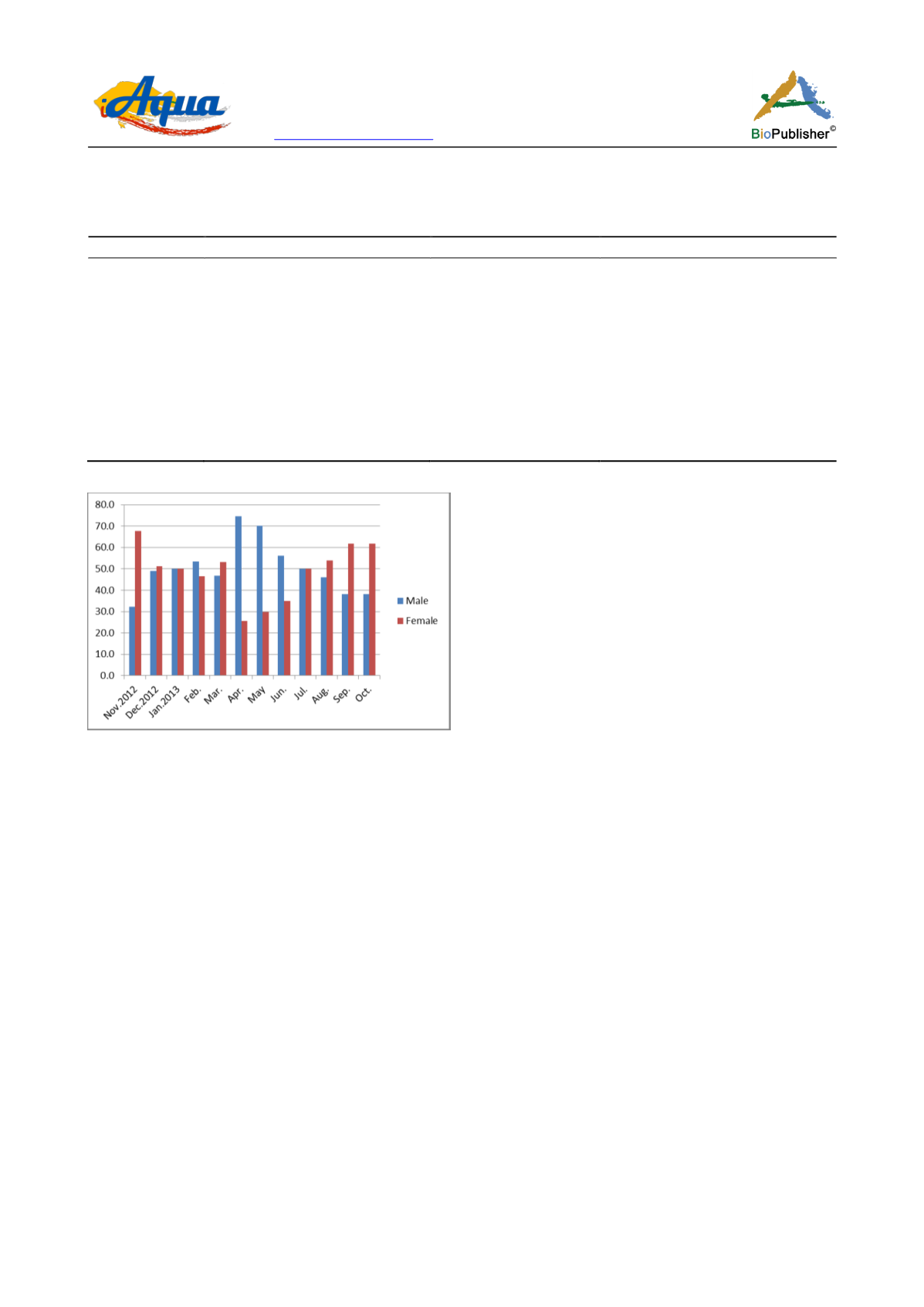
International Journal of Aquaculture, 2016, Vol.6, No.5, 1
-
14
8
differs from population to another of the same species and may vary from year to year in the same population
(Nikolsky, 1963; EL-Halfawy
et al., 2007).
Table 2 Number of maturity stages for many mullet species at different regions
Species
Regions
No of Maturity stages
Referances
L. klunzingeri
L. ramada
L. argentea
L. abu
L. klunzingeri
Mugil cephalus
Mugil cephalus
L. parsia
L. carinata
Kuwaiti Waters
Lake Timsah, Egypt
South-eastern Australia
Waters of Khozestan province
Persian Gulf &Oman Sea
Neretva Estuary (Croatia)
Northern Coast (Senegal)
South-eastern of India
Suez Bay, Egypt
seven stages
six stages
six stages for females
Five stages for males
Sex stages
Six stages
six stages
Six stages
Five stages for males
seven stages
(Abou-Seedo and Stephen, 2004)
(EL-Halafawy et al, 2007)
(Kendall and Gray ,2008)
(Chelemal et al,2009)
(Hakimelahi et al, 2011)
(Bartulović et al, 2011)
(Ndour et al, 2013)
(Chakrabarti et al ,2014)
Present study
Figure 9 Monthly variation in sex ratio of
L.carinata
in Suez Bay
The results showed that, females were dominant from September (61.8%) to December (51.1%), and males were
dominant from February (53.5%) to June (56.1%), while there are no significant difference between number of
males and females (p<0.5) in January and July, overall throughout the whole period of investigation the
percentage of females to males were almost similar 1:1.
In the present study the sex ratio not constant throughout the different months, particularly after the breeding
season. In the period after the spawning season, the males of
L.carinata
were dominant than females that is
similar to (El-Mor, 1993), while females exceeded males before and during the breeding period, this may be due
to migration of males for spawning elsewhere before females, this is in agreement with (Mahmoud, 1997) whose
recorded the ratio for the same species. (Oliveira et al., 2011) recorded the same ratio (1M: 1.04F) for
Mugil
curema
, and (Wijeyaratne, 1990) for
Liza macrolepi
s, with slight differ from (1M:1.13F) which recorded by
(Lawson, 2010) for the same species and (1M:1.14F) and (1F:1.26M) which evaluated by (Ergene, 2000 and
Kasimoǧlu, 2011), respectively for another species.
In contrast many authors recorded high differ of sex ratio from the hypotheses value (1:1) with a favor of females
than males (Ilkyaz, 2006; Balik et al., 2011; Hakimelahi et al., 2011; Hashemi et al., 2013) detected sex ratio male :
femal at (1:1.87; 1:2.7; 1:2.87; 1:1.77), respectively. This variety in sex ratio could be due to the differential
fishing factors related to seasons and schooling in feeding and spawning grounds (Sarojini, 1958; Silva and De
Silva, 1981; Silva and De Silva, 1982; Hoda and Qureshi, 1989; Abou - Seedo and Stephen, 2004).


